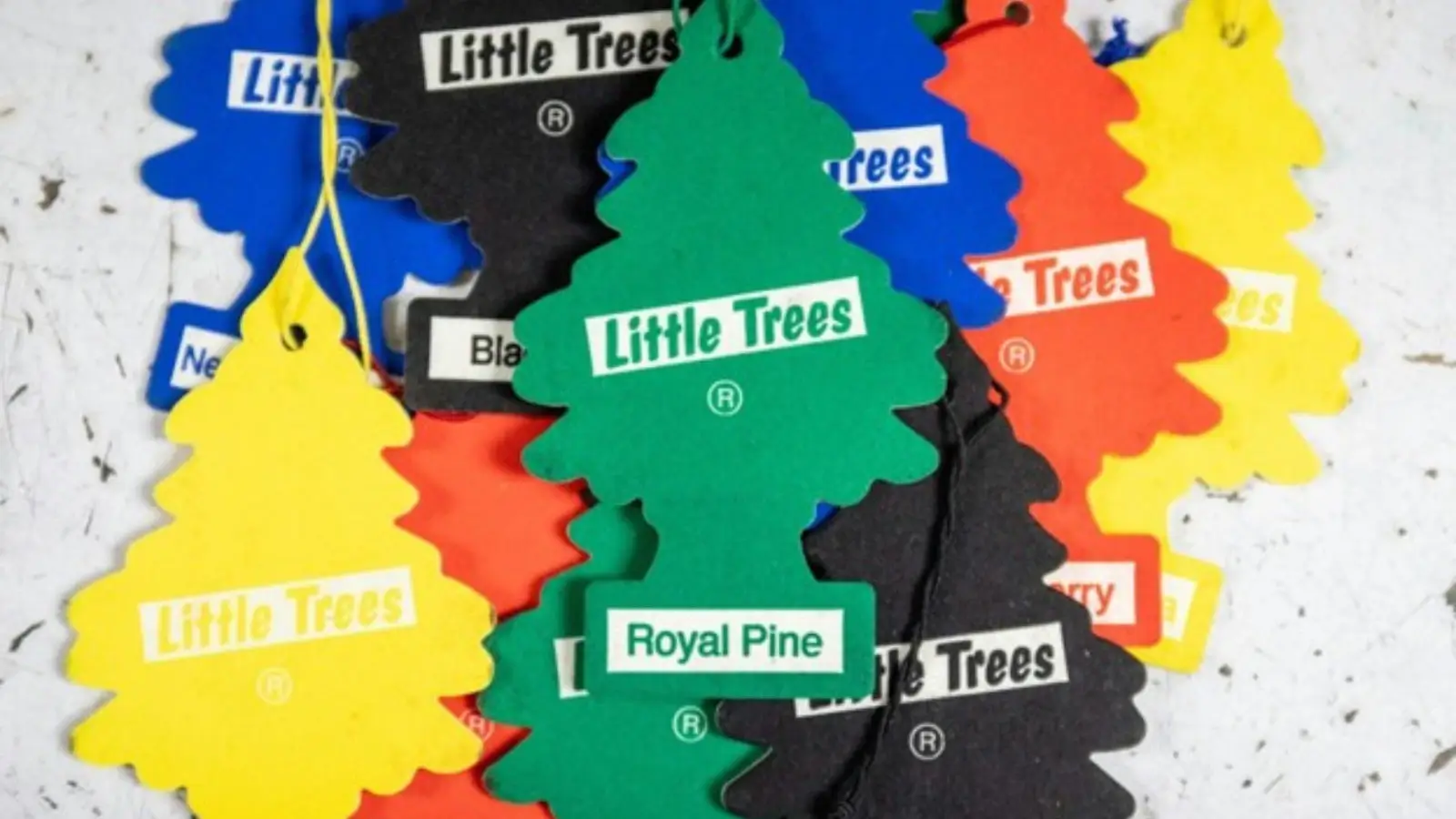


It’s a strange truth of modern commerce. One of the most recognizable pieces of car branding isn’t a logo, a bumper sticker or a vanity plate, it’s a little cutout evergreen dangling from the rear-view mirror. The stylized pine tree that millions of people have hooked inside their cars is more than nostalgia, it was the blunt instrument that transformed a niche odor-control idea into a durable consumer goods category. The story of how the auto air freshener industry took off, and how Little Trees led the way, is a tidy lesson in product design, distribution, and the power of a simple brand asset.
The origin story reads like a movie script. In 1952, a milk truck driver in upstate New York complained to Julius Sämann, a chemist who’d spent years extracting aromatic oils in northern forests, about the persistent smell of spoiled milk. Sämann set to work combining scented oils with absorbent blotter material, punching it into a tree shape as a nod to his work among evergreens. That tree became the prototype for Little Trees, manufactured by Car-Freshner Corporation and quickly recognizable by drivers across North America and, eventually, the world.
The invention’s cleverness was deceptively simple. It was cheap to make, easy to hang, and offered a predictable scent experience that lasted for weeks. The tree shape gave the product shelf presence and immediate recognizability. A primitive kind of brand shorthand that retailers and consumers could both grasp. In retail, that kind of instant comprehension matters. Shoppers understand what to do with the product at a glance, and the product becomes a cheap impulse buy at checkout lines and gas stations.
Little Trees’ early success was driven by two business moves that are staples of consumer-packaged-goods strategy. First, it solved the genuine problem of unwanted odors with a single product. Second, the company placed that product where drivers frequent such as convenience stores, auto parts shops, gas stations and supermarket checkout aisles. The combination of immediate utility and omnipresent placement turned a one-use purchase into a recurring habit. People bought them to mask odors in their car, parents bought them for messy teenagers, and car rental agencies bought in bulk.
That distribution strategy made Little Trees a cultural default. When a product becomes the easy answer to a common problem and a regular presence in the retail ecosystem, it stops being just an item and becomes part of behaviour. A little ritual performed when you get into the car. Over decades that ritual cemented Little Trees’ status as a category leader.
Another vital piece of the puzzle was product innovation in scent and SKU variety. Little Trees didn’t just sell “pine”. Over time the line expanded into dozens of fragrances such as vanilla, new car, floral bouquets and even novelty scents which encouraged collectors and repeat buyers. They even created the most popular scent in the world which they dubbed Black Ice. This product turned simple odor control into lifestyle expression. Your choice of scent now signaled something about you, whether intentionally or not.
Branding also mattered. The evergreen silhouette became synonymous with “car scent.” That recognition insulated Little Trees against low-cost competitors. Even when cheaper knockoffs appeared, many consumers preferred the familiar logo and trusted name on the packaging.
While Little Trees set the tone, other companies spotted opportunities to serve different kinds of drivers. Over time, the industry diversified well beyond hanging paper fresheners:
Vent clips and diffusers – Companies like Procter & Gamble’s Febreze Car introduced compact devices that clip onto air vents, using airflow to disperse fragrance. These appealed to drivers who wanted a subtler, more controlled scent experience without something dangling in view.
These alternatives didn’t replace Little Trees, they broadened the market. By introducing variety in form, price, and scent profile, competitors helped transform auto air fresheners from a one-note product into a diversified category with mass, mid-tier, and premium segments.
What began as a single novelty matured into a sizable industry. Market research firms estimate the global car air-freshener market to be in the multiple-billion-dollar range. Fortune Business Insights put the market value at about USD 2.28 billion in 2023 with steady projected growth, and other analysts have reported similar valuations and growth trajectories through the late 2020s.
The category’s growth has been amplified by a couple of larger consumer trends. First, rising car ownership in developing markets and steady vehicle fleets in mature markets. Second, consumer expectations about in-car experience expanded. Buyers now think of scent as part of interior comfort and brand experience, not just hygiene. Finally, innovation in formats. From hanging blotters to clips, sprays, diffusers and vent-attach devices, the industry has broadened.
Little Trees didn’t own the category forever, but its early mover advantage translated into durable market power. In recent industry writeups, analysts describe the market as dominated by a handful of big names. Legacy brands like Little Trees and major consumer goods companies like Procter & Gamble (with Febreze) together command a substantial portion of sales. That concentration is typical in mature CPG segments. Scale in manufacturing, distribution and brand recognition creates barriers to entry for challengers.
As the market scaled, it also encountered scrutiny. Some scent formulations contain volatile organic compounds (VOCs) and other chemicals that regulators and public health advocates occasionally flag. Consumers have become more ingredient-conscious, preferring “natural”, low-VOC or recyclable packaging options. This has nudged the industry toward cleaner formulations and more transparent labeling, while also creating opportunities for niche players specializing in “green” or “natural” products.
For business strategists, the Little Trees story is instructive on several fronts. First, elegant simplicity sells. A cheap, reliable solution to a common problem paired with immediate retail visibility can build a category. Second, branding and form factor are as important as function. The tree silhouette converted a product into an icon. And third, scale matters. Distribution and manufacturing strength allowed early leaders to maintain advantage even as competitors proliferated.
Finally, the sector’s steady growth, now measured in billions of dollars globally, shows how a product that begins as a practical fix can evolve into an experience economy play. Fragrance in the car became a small but meaningful way for consumers to personalize their private space, and companies that recognized and capitalized on that emotional dimension reaped the rewards.
Looking forward, expect continued segmentation. Basic, inexpensive options will remain staples in convenience aisles, while premium, sustainable and tech-enabled solutions (vent diffusers, app-controlled scent systems, even OEM-installed scent packages) will carve out higher-margin niches. Incumbents like Little Trees, which already enjoy iconic brand equity, are positioned to play across those tiers if they keep innovating in scent, materials and packaging.
In the end, the success of Little Trees is a reminder that sometimes the simplest ideas, a tree-shaped scrap of scented paper, are the ones that grow into industries. What started as a practical answer to spoiled milk became a tiny, fragrant empire that reshaped how millions start and end their drives.